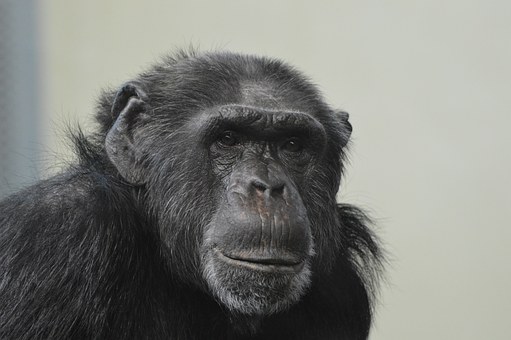DE FAAKTO OUTBREAK INTELLIGENCE
25 MAY 2019
SITUATION-MONKEYPOX NIGERIA
BACKGROUND-U.S. CENTER FOR DISEASE CONTROL ISSUES MONKEYPOX WATCH LEVEL 1-PRACTICE USUAL PRECAUTIONS
Key Points from the CDC Monkeypox Watch
- An outbreak of monkeypox has been ongoing in Nigeria since September 2017
- Health officials report 300 cases of monkeypox, including multiple deaths
- Three travelers infected with monkeypox in Nigeria returned home to the United Kingdom and one to Israel
- There is a reported secondary case of the disease in a health care worker in the United Kingdom
- The Singapore Ministry of Health reported a fourth exported case of the disease in a traveler who arrived from Nigeria
- These are the first cases of monkeypox reported outside Africa since 2003 (CDC)
The CDC Recommends
- Travelers to Nigeria should protect themselves from monkeypox by washing hands often with soap and water, and avoiding contact with animals or people that may be sick
About Monkeypox
- Monkeypox is a rare viral zoonotic disease that occurs primarily in remote parts of central and west Africa, near tropical rainforests
- The monkeypox virus is similar to human smallpox, a disease that has been eradicated in 1980. Although monkeypox is much milder than smallpox, it can be fatal
- The monkeypox virus is mostly transmitted to people from various wild animals such as rodents and primates, but has limited secondary spread through human-to-human transmission
- Fatality in monkeypox outbreaks has been between 1% and 10%, with most deaths occurring in younger age groups
- There is no specific treatment or vaccine available although prior smallpox vaccination was highly effective in preventing monkeypox as well
Transmission
- Infection of index cases results from direct contact with the blood, bodily fluids, or cutaneous or mucosal lesions of infected animals
- Infections have been documented through the handling of infected monkeys, Gambian giant rats and squirrels, with rodents being the most likely reservoir of the virus
- Eating inadequately cooked meat of infected animals is a possible risk factor
- Human-to-human, transmission can result from close contact with infected respiratory tract secretions, skin lesions of an infected person or objects recently contaminated by patient fluids or lesion materials
- Transmission occurs primarily via droplet respiratory particles usually requiring prolonged face-to-face contact
Symptoms
- The first symptoms of monkeypox include fever, malaise, headache, and sometimes sore throat and cough
- A distinguishing feature of monkeypox from smallpox is lymphadenopathy (swollen lymph nodes)
- This typically occurs with fever onset, 1 to 2 days before rash onset, or rarely with rash onset
- Lymph nodes may swell in the neck (submandibular & cervical), armpits (axillary), or groin (inguinal) and occur on both sides of the body or just one
Rash
- Following the first symptoms, lesions will develop in the mouth and on the body
- Lesions progress through several stages before falling off
- A person is contagious from the onset of the rash through the scab stage
Treatment
- There are no specific treatments available for monkeypox infection, but monkeypox outbreaks can be controlled
- Smallpox vaccine, cidofovir and Brincidofovir, Tecovirimat (ST-246), and vaccinia immune globulin (VIG) can be used to control a monkeypox outbreak
- Smallpox vaccine can protect people from getting monkeypox
- Smallpox vaccine is at least 85% effective in prevention
- Vaccination after a monkeypox exposure may help prevent the disease or make it less severe (WHO)
CDC https://wwwnc.cdc.gov/travel/notices/watch/monkeypox-nigeria
WHO https://www.who.int/en/news-room/fact-sheets/detail/monkeypox
________________________________________________________________________________________
DE FAAKTO OUTBREAK INTELLIGENCE
05 FEBRUARY 2019
OUTBREAK INTELLIGENCE
UPDATE-WORLD HEALTH ORGANIZATION & NIGERIA CENTER FOR DISEASE CONTROL
MONKEYPOX OUTBREAK
The Count
05 February 2019 (End of Reporting Period-13 December 2018)
- 311 cases Monkeypox
- 132 confirmed cases
- 7 Deaths
- 2.3% death rate
WHO https://apps.who.int/iris/bitstream/handle/10665/279981/OEW05-2601022019.pdf
About Monkeypox
- Monkeypox is a rare viral zoonotic disease that occurs primarily in remote parts of central and west Africa, near tropical rainforests
- The monkeypox virus is similar to human smallpox, a disease that has been eradicated in 1980. Although monkeypox is much milder than smallpox, it can be fatal
- The monkeypox virus is mostly transmitted to people from various wild animals such as rodents and primates, but has limited secondary spread through human-to-human transmission
- Fatality in monkeypox outbreaks has been between 1% and 10%, with most deaths occurring in younger age groups
- There is no specific treatment or vaccine available although prior smallpox vaccination was highly effective in preventing monkeypox as well
Transmission
- Infection of index cases results from direct contact with the blood, bodily fluids, or cutaneous or mucosal lesions of infected animals
- Infections have been documented through the handling of infected monkeys, Gambian giant rats and squirrels, with rodents being the most likely reservoir of the virus
- Eating inadequately cooked meat of infected animals is a possible risk factor
- Human-to-human, transmission can result from close contact with infected respiratory tract secretions, skin lesions of an infected person or objects recently contaminated by patient fluids or lesion materials
- Transmission occurs primarily via droplet respiratory particles usually requiring prolonged face-to-face contact
Symptoms
- The first symptoms of monkeypox include fever, malaise, headache, and sometimes sore throat and cough
- A distinguishing feature of monkeypox from smallpox is lymphadenopathy (swollen lymph nodes)
- This typically occurs with fever onset, 1 to 2 days before rash onset, or rarely with rash onset
- Lymph nodes may swell in the neck (submandibular & cervical), armpits (axillary), or groin (inguinal) and occur on both sides of the body or just one
Rash
- Following the first symptoms, lesions will develop in the mouth and on the body
- Lesions progress through several stages before falling off
- A person is contagious from the onset of the rash through the scab stage
Treatment
- There are no specific treatments available for monkeypox infection, but monkeypox outbreaks can be controlled
- Smallpox vaccine, cidofovir and Brincidofovir, Tecovirimat (ST-246), and vaccinia immune globulin (VIG) can be used to control a monkeypox outbreak
- Smallpox vaccine can protect people from getting monkeypox
- Smallpox vaccine is at least 85% effective in prevention
- Vaccination after a monkeypox exposure may help prevent the disease or make it less severe
________________________________________________________________________________________
De Faakto Outbreak Intelligence
07 January 2019
UPDATE-Situation Report Nigeria Center for Disease Control
Nigeria continues to report sporadic cases of Monkeypox since the beginning of 2018
Reporting Period November 14 – December 13, 2018
• 15 new suspected monkeypox cases were reported out of which
six confirmed cases were recorded
• 114 suspected, 45 confirmed, 1 probable cases and 1 death have been reported in
2018
• Since the beginning of the outbreak in September 2017, 311 suspected cases have been reported
and 7 deaths were recorded
About Monkeypox
- Monkeypox is a rare viral zoonotic disease that occurs primarily in remote parts of central and west Africa, near tropical rainforests
- The monkeypox virus is similar to human smallpox, a disease that has been eradicated in 1980. Although monkeypox is much milder than smallpox, it can be fatal
- The monkeypox virus is mostly transmitted to people from various wild animals such as rodents and primates, but has limited secondary spread through human-to-human transmission
- Fatality in monkeypox outbreaks has been between 1% and 10%, with most deaths occurring in younger age groups
- There is no specific treatment or vaccine available although prior smallpox vaccination was highly effective in preventing monkeypox as well
Transmission
- Infection of index cases results from direct contact with the blood, bodily fluids, or cutaneous or mucosal lesions of infected animals
- Infections have been documented through the handling of infected monkeys, Gambian giant rats and squirrels, with rodents being the most likely reservoir of the virus
- Eating inadequately cooked meat of infected animals is a possible risk factor
- Human-to-human, transmission can result from close contact with infected respiratory tract secretions, skin lesions of an infected person or objects recently contaminated by patient fluids or lesion materials
- Transmission occurs primarily via droplet respiratory particles usually requiring prolonged face-to-face contact
Symptoms
- The first symptoms of monkeypox include fever, malaise, headache, and sometimes sore throat and cough
- A distinguishing feature of monkeypox from smallpox is lymphadenopathy (swollen lymph nodes)
- This typically occurs with fever onset, 1 to 2 days before rash onset, or rarely with rash onset
- Lymph nodes may swell in the neck (submandibular & cervical), armpits (axillary), or groin (inguinal) and occur on both sides of the body or just one
Rash
- Following the first symptoms, lesions will develop in the mouth and on the body
- Lesions progress through several stages before falling off
- A person is contagious from the onset of the rash through the scab stage
Treatment
- There are no specific treatments available for monkeypox infection, but monkeypox outbreaks can be controlled
- Smallpox vaccine, cidofovir and Brincidofovir, Tecovirimat (ST-246), and vaccinia immune globulin (VIG) can be used to control a monkeypox outbreak
- Smallpox vaccine can protect people from getting monkeypox
- Smallpox vaccine is at least 85% effective in prevention
- Vaccination after a monkeypox exposure may help prevent the disease or make it less severe
Nigeria Center for Disease Control
https://ncdc.gov.ng/themes/common/files/sitreps/caf5c2b9257563dfee0b55cee9a756d8.pdf
CDC
https://wwwnc.cdc.gov/travel/notices/alert/monkeypox-nigeria
WHO
https://www.who.int/en/news-room/fact-sheets/detail/monkeypox
______________________________________________________________________
World Health Organization reports Monkeypox outbreak in Nigeria
On 26 September 2017, WHO was alerted to a suspected outbreak of monkeypox in Yenagoa Local Government Area (LGA) in Bayelsa State, Nigeria. Patients developed symptoms of fever and generalized skin rash over a period of four weeks. Epidemiological investigations into the cluster show that all infected cases had a contact with monkey about a month prior to onset.
From the onset of the outbreak in September 2017 through 15 September 2018, a total of 269 suspected cases across 25 states and one territory, including 115 confirmed cases across 16 states and one territory, have been reported. Seven deaths were recorded. Two health care workers were among the confirmed cases.






